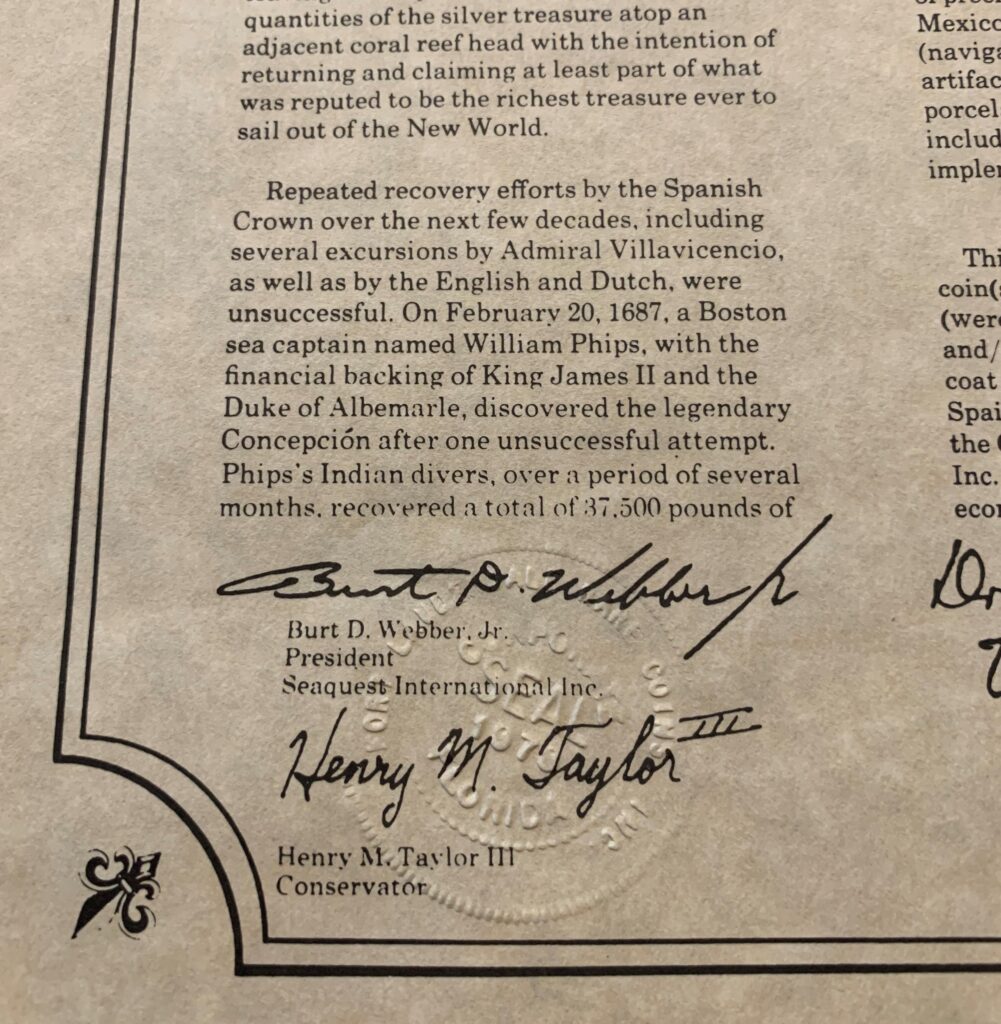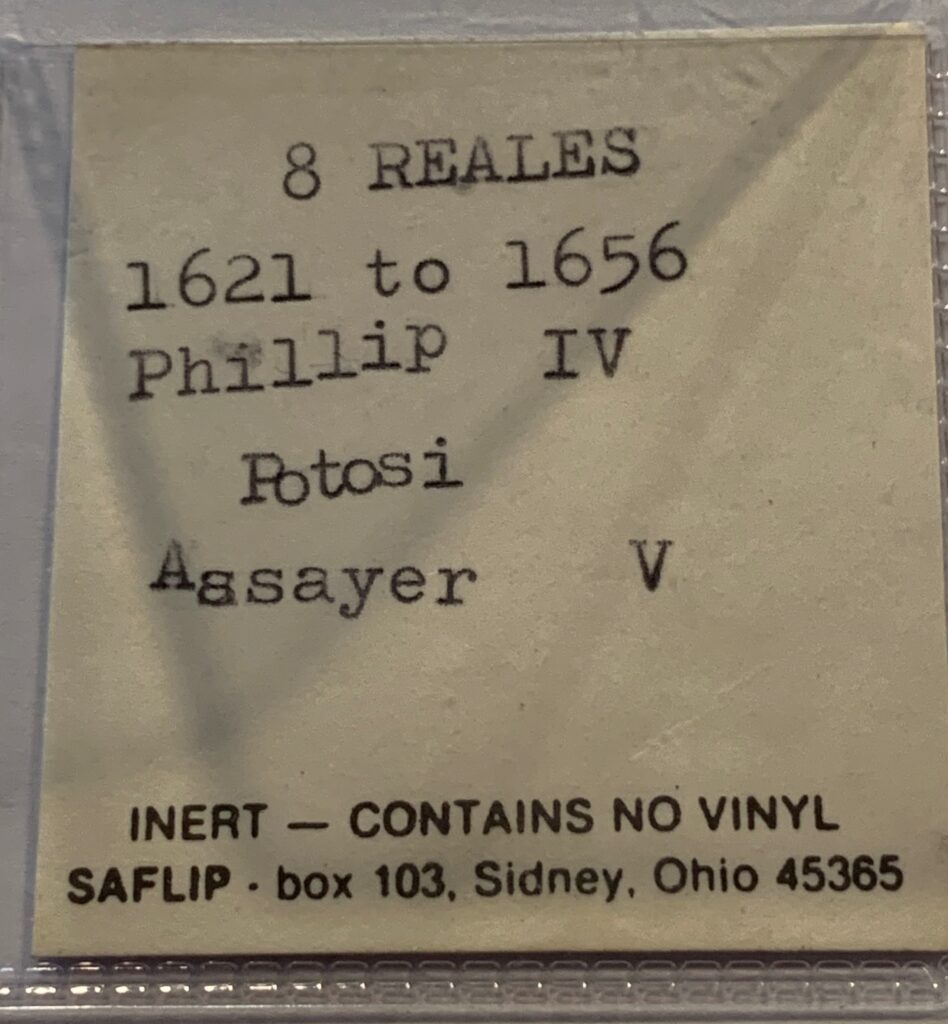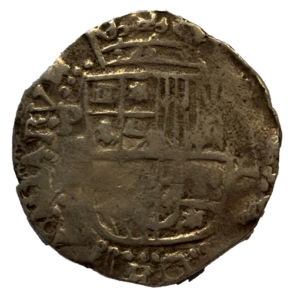
1621-1656 Potosi Bolivia 8 Reales From The Concepción Shipwreck
 Item #CC-0179 | 1621-1656 Potosi Bolivia 8 Reales (From the Concepción Shipwreck)
Item #CC-0179 | 1621-1656 Potosi Bolivia 8 Reales (From the Concepción Shipwreck)
Mint: Potosi, Bolivia
Assayer: Appears to be a “V” for Geronimo Velázquez
Ruler/Period: King Philip IV (1605-1665)
Grade: Uncertified
Weight: 27.02 Grams
Description: This well-preserved Spanish Colonial “piece of eight” was recovered from the Nuestra Señora De La Pura Y Limpia Concepción.
The Sinking of the Concepción
The Nuestro Señora de La Pura y Limpia Concepción, was a 600-ton Spanish galleon built in Havana, Cuba in 1620. In July of 1641, she left Veracruz, Mexico in a flotilla of 30 ships on a voyage bound for Spain carrying tons of silver from the rich mines of Mexico and Potosi. Also aboard were quantities of gold and jewels, silks, spices, porcelain, and jade. Treasures from the Orient, which had been sent on the Manila galleons to Acapulco then transshipped overland to Veracruz and loaded aboard the fleet. In addition to the government cargo, the Concepción and other ships also carried much of the personal treasure of Diego de Pacheco, Viceroy of New Spain, and payments being remitted by major merchants of all the new World Colonies.
While sailing through the Florida Straits, the fleet was caught in a hurricane which scattered and sank most of the ships. Severely damaged, the Concepción headed for Puerto Rico but miscalculated the course and on October 30, 1641 she rammed into the Abrojos Reef, near Hispaniola (now known as the Dominican Republic).
After 12 days adrift she finally sank on November 11th. Between the storm and the wreck itself, starvation, exposure, and sharks, over three hundred of the 500 people aboard the Concepcion perished.
Then 46 years later, in 1687, William Phips of New England learned, through a survivor the location of the wreck. He organized an expedition with two ships and in order to get past the Spanish authorities, he deceived them into believing that he was on a trade mission. He left one ship in port and with the other, he headed to the wreck site with a group of native divers who spotted cannons under the surface.
The divers recovered almost 30 tons of coins, which Phips took back to England. Phips would cede part of his new found wealth to the Crown, depositing it for the founding of the Bank of England, and would later end up being appointed governor of the colony of Massachusetts.
Later, in the 1980’s and 1990’s more of the treasure was found, with much of it being placed in a museum in the Dominican Republic.
“Pieces of eight” were the world’s first global currency. They were used across the vast Spanish Empire, stretching from South America to the Philippines, but were used outside the empire as well. In 1600, one coin would have been worth the equivalent of a modern £50 note. The front of the coin is decorated with the coat of arms of the Habsburgs, the rulers of Spain and the most powerful family in Europe.
This coin exhibits a nicely centered and defined shield and crown, a boldly struck “P” for Potosi, and nicely centered Jerusalem cross on the reverse. The surfaces display some saltwater effects that one would expect from a coin that was submerged underwater for over 330 years. This coin comes complete with its certificate of authenticity and 2×2 flip. Overall, this is a very nice historically significant coin that will compliment any Spanish Colonial shipwreck coin collection.
This coin comes with an embossed stamped certificate of authenticity dated November 1, 1979.
In stock
$1,500.00




